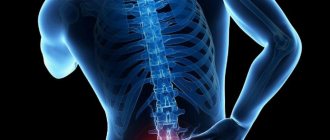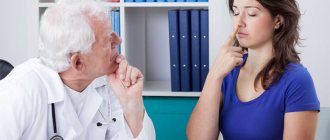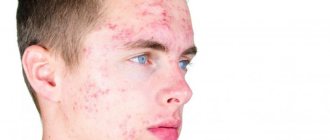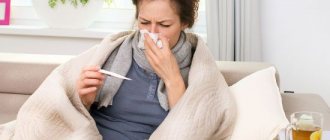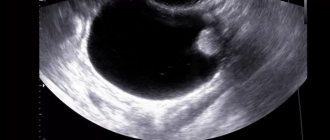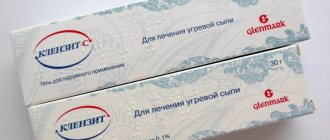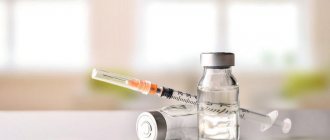Chestnut tincture is also an effective remedy for radiculitis.
Does acupuncture help after a stroke?
Acupuncture is part of a set of procedures aimed at restoring a patient who has suffered a stroke. One of its most serious consequences is paralysis. Acupuncture helps increase the physiological activity of muscles, brings them into a state of tone and restores blood supply.
Benefits of the procedure for women
During menopause, acupuncture will help get rid of associated symptoms that cause discomfort: sleep disturbance, hot flashes, mood swings, irritability and excitability. The benefits of acupuncture for women are not limited to this, since regular procedures help in conceiving a child for couples whose attempts remained fruitless for a long time, and official medicine only threw up its hands, without finding objective reasons. In addition to pharmacological agents and traditional medicine methods, experimental acupuncture is used to build up the endometrium. Is it possible to do acupuncture for uterine fibroids? Myomas are classified as benign tumors, but the list of contraindications to acupuncture procedures includes neoplasms.
For uterine fibroids, the following types of massage are prohibited:
- Lymphatic drainage;
- Acupuncture;
- Cavitation (ultrasound exposure);
- Regular massage in the abdomen and thighs.
This categorical prohibition is lifted after completing the postoperative rehabilitation period or successful drug treatment.
You may be interested in the fact that pressotherapy is a useful procedure for the female body. Read all the details about this method in this article...
Contraindications and side effects
Contraindications to acupuncture in adults may include acute viral infections, severe exhaustion of the body, pregnancy and the presence of tumors, both malignant and benign. The last contraindication is controversial, since many people practice acupuncture even for oncology as an additional therapy. It is worth noting that you should not contact a specialist in oriental medicine without consulting your doctor. Women during their periods and breastfeeding mothers are also advised to refrain from acupuncture. Some types of skin conditions are incompatible with acupuncture, so your dermatologist should have the final say. The list of side effects is limited to headaches, fainting, nausea, tachycardia, painful spasms in the problem area or in the area of the affected organ. Sessions are not recommended for children under 8 years of age.
For more information about contraindications for the procedure, watch the video:
How many acupuncture sessions should you do?
The number of sessions depends entirely on the recommendations of the specialist who will conduct them. Usually all procedures are grouped into 4 courses. Each of them typically includes 10 sessions with an average duration of approximately 1 hour. They are carried out at different time intervals depending on the dynamics of the disease and the effectiveness of therapy.
How often can I do it? The first course is usually limited to 10 days (1 procedure per day). Then they take a break of 30 days. The second course also includes 10 sessions, but with an interval of 1 day between them. The third course is carried out 90 days after the second. After it, recovery usually occurs, and subsequent procedures are preventive in nature. They are carried out in 10 sessions every six months. There may be a gap of a day between procedures, or they will be carried out daily.
You might be interested to know what benefits hamam has. Read more in this article...
How does an acupuncture session work?
Traditionally, acupuncture techniques are performed quite rarely. Specialists practice different techniques, so there is no single scenario for conducting sessions. The common features of a standard acupuncture procedure are:
- the first acupuncture session is aimed at working with the body as a whole (general effect);
- further sessions are aimed at working with local zones responsible for specific organs;
- on average, the course includes 10 sessions (daily);
- for chronic diseases, the course can be increased to 15 sessions with longer breaks;
- The duration of one session ranges from 15 to 60 minutes.
How did acupuncture come about?
According to historical records, acupuncture has been practiced for over six thousand years. The first mention of such a treatment method in written sources appeared around two millennia BC, and the oldest acupuncture needles that have survived to this day date back to the Stone Age.
There is a theory that acupuncture appeared by accident. As if one farmer, suffering from a severe headache, while working in the field, hit himself with a hoe, after which the discomfort went away. The peasant told his neighbors about this, and so, gradually changing, the method developed into a whole teaching.
China is traditionally considered to be the birthplace of Zhenjiu, but at the same time, a number of scientific works provide information that a mummy with traces probably left by acupuncture needles was discovered in the Alps. This find lay in the ground for more than six thousand years. This fact may refute the claim that the birthplace of the method is Asia. It is likely that Europeans also practiced healing in this way.
At different stages of history, the benefits of acupuncture have been repeatedly proven and disproven. Chinese rulers tried to ridicule and ban this science in the nineteenth and twentieth centuries.
However, even in the Soviet Union, known for its strict morals, acupuncture was used by chiropractors, reflexologists and physical therapists. The technique was recognized by the Ministry of Health itself, the benefits of acupuncture were recognized, one might say, at the state level, and large medical institutions even had entire acupuncture departments.
Why does acupuncture work?
According to the ancient sages, any problem in the human body is associated with improper movement of vital energy. To restore proper circulation of qi, it is enough to influence certain points - the intersection of channels.
Modern medicine interprets the effectiveness of acupuncture in its own way. Scientists believe that acupuncture points are places where a large number of nerve endings accumulate, and exposure to them causes the emergence of a certain kind of impulses.
Nerve impulses from acupuncture reach the cerebral cortex much faster than their pain counterparts. A positive therapeutic effect is achieved by blocking areas that are excited due to an inflammatory process or other pathology in the body.
In addition, exposure to needles helps activate the endocrine system and release hormones into the blood. Some doctors compare the effects of acupuncture to the use of opium, a potent narcotic used in traditional medicine as a pain reliever.
The effect of acupuncture on the brain has been proven by scientists using magnetic resonance imaging. True, they do not deny that acupuncture is just a well-thought-out placebo. The latter, in turn, is refuted by the fact that the method is successfully used in the treatment of children and animals in which the placebo effect is absent.
The beneficial effects of acupuncture
Modern medicine has stopped disputing the positive effects of acupuncture on human health. This is undoubtedly due to the numerous reviews of patients satisfied with the treatment, but, in addition, it is confirmed by the results of recognized clinical studies.
During 2006, at the Institute of Theoretical and Experimental Biophysics of the Russian Academy of Sciences, scientists carried out work to study the therapeutic role of acupuncture in relation to diseases associated with the musculoskeletal system, connective tissues, respiratory, nervous and genitourinary systems. Many indicators were studied, including analysis of the components of blood cells, their oxidation abilities and biochemical indicators, the results of ultrasound examinations, and monitoring of blood pressure levels. As a result, the study proved the significant effectiveness of acupuncture, which ultimately had a success rate of 80 - 91%.
Other researchers are also working on similar works. The achievements of these studies are actively discussed at international scientific conferences. However, the question of the mechanisms that trigger recovery processes as a result of acupuncture still does not have a clear answer and causes controversy among scientists.
There are about 20 different theories born after certain studies, clinical, biochemical or immunohistochemical in nature.
Thus, the capillary theory states that the effective effects of acupuncture are directly related to the fact that the installation of needles stimulates the activation and restoration of blood flow moving through the capillaries located under the skin. This, in turn, has a beneficial effect on the mutual blood exchange between the skin and tissues. The disadvantages of this version include its inability to explain the positive effects received by internal organs.
The tissue theory suggests that placing a needle at the level of the upper layers of the skin activates the release of biologically active substances located in damaged cells and tissues. Thanks to these substances, the body is stimulated, leading to the activation of pressure and the restoration process in cells, the passage of oxygen through tissues improves and the body’s resistance to external negative influences increases.
This is interesting!
To confirm the tissue theory, a full-scale study was conducted in 2010. Before facelift surgery, specialists (with the patients' permission) inserted acupuncture needles into reflexogenic points on the face, then took skin samples to determine the content and distribution of a substance called histamine. These manipulations actually served to increase histamine levels; in addition, there was a difference in its distribution throughout different skin structures.
The neuro-reflex theory has achieved maximum popularity among scientists today, suggesting that from irritation of points located in a certain way on the skin area, a stimulus is transmitted through nerve fibers to the spinal cord. And then - to special parts of the brain. As a result, all this triggers a complex chain of reactions, including changes in blood circulation, as well as causing the release of biologically active substances and obtaining a hormonal response. Among other things, a certain amount of endorphins, also called “happiness hormones,” is produced. They, in turn, have a positive effect on the emotional component of the condition and on reducing the perception of pain. The study of nervous, biochemical and electrical reactions that occur as a result of the impact of needles on reflex points continues to this day. The difficulty of establishing unambiguous patterns is associated with the complexity of the biophysical system that the human body represents.
What is the key to successful treatment?
Effective therapy is only possible if all actions are carried out under the supervision of a highly qualified doctor. It is important to have complete trust in the specialist and the work he does; even official medicine speaks about this. But how do you know if a doctor is good?
First, acupuncture needles should not be reusable, even if they are sterile. Otherwise, there is a real risk of contracting a wide range of diseases, including incurable HIV. You should not undergo an acupuncture session immediately before or after eating.
An important point is a comfortable ambient temperature; it is also not recommended to visit a bathhouse or sauna before acupuncture, or spend a long time in the cold. Hypothermia will contribute to muscle contraction and vascular spasm, which reduces the effect of therapy.
Acupuncture points on the human body
Chinese pediatrician Chen Dan'an identified the main acupuncture points on the human body. The atlas compiled by him based on the results of his activities includes 664 channels. Acupuncture, says Chen Dan'an, is a Taoist sacrament that is based on the principles of yin and yang teachings.
There are fourteen so-called meridians. It is there that the bundles of vital energy converge, and they are also the centers of influence on the human body. Such acupuncture points on the human body (the atlas represents their specific location, but you should not engage in therapy yourself) have their own zone of influence.
Harmony points are located at the beginning and end of a meridian and affect the complex functioning of the organs under its influence. At the same time, each energy beam can be stimulated only in one place, which is responsible for activating the internal energy reserves in the human body.
Types of acupuncture
Acupuncture is divided into corporal and auricular types. The first involves influencing points throughout the body. In the second, knowledge about the reflexogenic zones that are located on the auricle is used. It happens that these two types are opposed to each other, although in fact the acupuncturist needs to master both types of techniques. At the same time, there is an opinion that even within the framework of one treatment course, one technique can be supplemented with another to achieve maximum effect.
It is important to note that there are different variations of needles used in acupuncture. Their choice is determined by the impact zone. High quality metal is used in the manufacture of corporal needles, and surgical stainless steel is used for auricular needles. Needles can be either disposable or reusable; in addition, gold and silver needles are sometimes used.
Sometimes acupuncture is accompanied by the application of electric current using needles as conductors. In addition, together with the installation of needles, the following methods of influence are used:
- cauterization;
- warming up;
- pressure on reflexogenic points;
- use of substances that can cause irritation;
- other manipulation options.
These methods are not considered acupuncture, although they have a similar principle of influence.
Diagnosis and treatment of diseases
Calming and alarming points are identified. Impact on the first beams of energy causes pleasant sensations and affects the stabilization of the central nervous system. Alarm points, or mo-points, correspond to internal organs. So, if, when pressing on the accumulation of energy, which is responsible for the functional ability, for example, the liver, painful sensations occur, it can be assumed that the final diagnosis is associated specifically with the pathology of this organ.
There are also acupuncture points (the atlas also presents such points), which can only be influenced in the treatment of diseases. Many years of experience of acupuncture specialists prove that this practice not only does not cause complications and side symptoms, but also promotes recovery or the onset of a period of stable remission.
What are the positive effects of acupuncture?
As already noted, clinical studies proving the pronounced effectiveness of acupuncture are insufficient. This form of alternative medicine does not comply with the principles of evidence, and therefore everything remains in the category of alternative medicine. At the same time, Eastern masters do not require any scientific evidence. They manage to help patients who come to see them; very often diseases that are not amenable to drug therapy or other forms of traditional treatment are cured.
Craftsmen claim that they know ways to influence energy flows, the disturbances of which are manifested by diseases. According to practitioners, the human body is a functional system formed from so-called “meridians,” energy channels. Sometimes there are 12, sometimes 14 main “meridians”. 12 “meridians” are paired (corresponding to hollow and dense organs), another 2 are unpaired. All 14 are permanent. Each “meridian” consists of biologically active points (passes through them with an invisible thread) and is responsible for a separate organ or area of the body. During chronic processes in the body, unstable “meridians” are also formed.
All 14 “meridians” are associated with 5 types of different points - harmonizing, proactive, calming, anxiety points, and other specific ones. To influence these points, there are three rules: light rotating movements, medium power movements, and firm pressure with the thumb or knuckle. Effective for each of the main 12 “meridians” are not only the points that form it, but also some points on other “meridians”.
Competent influence on entire “meridians” or individual points according to given, long-learned patterns allows you to achieve the following positive effects of acupuncture :
- healing in a natural way - by activating the internal forces of the body; any pharmaceutical preparations are excluded, maximum essential oils;
- high efficiency of treatment at the primary stage of chronic diseases;
- the procedure leads to general improvement and stimulation of the body’s immune qualities rather than to a targeted effect; There is certainly a surge of strength and a complex positive effect on the body.
Western doctors who study acupuncture suggest that it relieves pain and has a calming effect (by inducing the body to produce opioid peptides or by affecting endocrine glands such as the hypothalamus).
The procedure should be performed by a qualified specialist, preferably in large centers specializing in this. Even professional acupuncture can come with some complications - discomfort, the development of unreasonable fear, up to the development of fainting, and the formation of hematomas. Incorrect insertion of the needle can lead to its fracture and getting stuck in the body. Subsequently, in some cases, surgical intervention may be necessary. If the needles are not sterile, infection may occur.
Why is acupuncture needed?
Acupuncture, according to its adherents, is a panacea for the treatment of various diseases, and in general promotes relaxation, increased immunity, general health and rejuvenation. An acupuncture session allows you to achieve the following results:
- restoration of the central nervous system;
- relieving spasms of muscles and blood vessels;
- elimination of allergic reactions;
- assistance with gynecological diseases;
- rapid healing of bones after fractures;
- fight against bad habits;
- improvement of the immune system;
- normalization of the pituitary gland;
- anti-inflammatory effect;
- stabilization of metabolism and functioning of the circulatory system;
- removal of edema;
- improvement of appearance (especially skin);
- getting rid of excess weight.
Indications for acupuncture
Reflexology is used in the treatment of the following pathologies:
- Pain of various types and origins, including migraine.
- Emotional and nervous disorders, diseases of the nervous system, such as depression, apathy, chronic fatigue, panic attacks, somatoform dysfunction of the autonomic nervous system, neuralgia, neuritis, plexitis, radicular syndromes, as well as neuroses of various etiologies and the consequences of stroke.
- Gastrointestinal diseases - stomach ulcers, gastritis, colitis, flatulence, dyspepsia, cholecystitis.
- Pathologies of the cardiovascular system - atherosclerosis, coronary heart disease, vegetative-vascular dystonia, low blood pressure.
- Diseases associated with metabolic disorders - diabetes, obesity.
- Respiratory diseases – bronchial asthma, bronchitis;
- ENT diseases – laryngitis, pharyngitis, rhinitis, sinusitis.
- Pathologies of the endocrine glands.
- Needles are effective for hernia, arthritis, arthrosis, osteochondrosis, heel spurs, bursitis, scoliosis, radiculitis, as well as other diseases of the musculoskeletal system.
- Injuries to joints and muscles.
- Diseases of the genitourinary system - cystitis, early menopause, prostatitis.
According to Chinese doctors, acupuncture treats more than 200 diseases.
There are diseases for which acupuncture is not recommended or cannot be used. They are associated with conditions where increased blood flow can aggravate the course of the disease.
Acupuncture is not prescribed or used for the following conditions and conditions:
- heat,
- various infections,
- diseases of the digestive and abdominal organs,
- injuries,
- fractures,
- pregnancy,
- age up to 7 years,
- oncology,
- damaged or inflamed skin,
- severe forms of cardiovascular diseases,
- blood pathologies.
In what cases is the procedure undesirable?
Despite all the delights of this method, there are those people for whom acupuncture is either undesirable or generally contraindicated. Depending on this particular sign, contraindications can be relative or absolute.
Relative contraindications are:
- pneumonia;
- difficult pregnancy;
- stroke or heart attack (recovery period);
- age under seven years;
- elderly people (over 70);
- physical or mental exhaustion;
- skin damage in places where needles will be placed (rashes, scars, moles, redness);
- varicose veins (needles should not be placed on affected areas).
The decision to perform a procedure in the presence of relative contraindications is made solely by the doctor, because acupuncture in this case can lead to side effects.
Who is contraindicated for acupuncture?
It is prohibited for patients with serious diseases in the active stage to undergo acupuncture: this includes cancer, AIDS, hematological diseases, mental disorders, infections (Botkin's disease, tuberculosis), fever, diseases requiring immediate surgical intervention. Acupuncture methods should not be used on women with pregnancy pathologies and infants. A chiropractor does not conduct acupuncture sessions for people under the influence of alcohol or drugs.
What is this?
Acupuncture or acupuncture is a non-drug treatment method using active points on the skin. This method is recommended for patients who have any manifestations of allergies or intolerance to certain medications.
Acupuncture is a very effective method of treating a number of diseases. It is based on influencing certain points of the human body using special metal needles of different lengths. The treating doctor selects the method and recipe based on the results of the diagnostics. Often, together with acupuncture, the doctor prescribes heating with infrared rays, electrotherapy and cauterization with wormwood cigars. All this allows you to quickly achieve the desired therapeutic effect.
A method of treatment such as acupuncture is distinguished by the fact that it has no direct contraindications, but ancient healers still insisted on the need for a detailed study of the localization of the points and all their functions, and also emphasized the importance of the ability to determine the patient’s condition and correctly select the treatment method. Doctors mastered the art of acupuncture for years, and those who mastered it perfectly were considered a great doctor.
What side effects are there?
If you understand what acupuncture is (its benefits and harm to the body should be studied before starting the procedures), then it is worth remembering the side effects. The professional will only use disposable, sterile acupuncture needles. A possible problem may be the development of bruises and bruises. At first glance, it seems that there is nothing wrong with this, but such microtraumas can lead to injury to nerves, tendons or blood vessels.
The reason why sessions of this therapy cannot be performed for people with tumors is the possible development of metastases or an increase in existing tumors. In patients who are depressed or have a nervous breakdown, loss of consciousness is possible. After stress or in a somewhat depressed state, acupuncture may cause tinnitus or dizziness.
The occurrence of many such effects largely depends on the professionalism of the doctor and the level of the clinic. A competent master inserts needles only to the required depth and at a certain angle. The seriousness and responsibility with which the doctor approaches the procedure absolutely excludes the occurrence of any problems. And most importantly, the benefits of acupuncture should not raise any doubts in the patient.
Mechanism of acupuncture procedure
Acupuncture treatment usually occurs daily or every two days. Also, procedures can take place once a week or, for example, once a month. The standard course of therapy is 12-15 sessions, each of which consists of a doctor examining the patient, analyzing his current condition, installing needles and recommendations for further self-help. On average, an acupuncture procedure lasts about thirty minutes.
Before placing needles, the acupuncturist will feel the areas of the body that will be treated. Then he treats the reflexogenic zones with alcohol and inserts disposable sterile needles into the corresponding acupuncture points.
The needle penetrates the skin vertically, in some cases almost horizontally, but most often at a certain angle. The angle of its inclination depends on the effect that the doctor wants to achieve for each specific disease. The depth of needle insertion and the duration of their effect is determined by the sedative (calming) or stimulating (tonic) type.
The sedative type implies strong irritation of acupuncture points, that is, the effect on biologically active zones occurs over a long period of time and the irritation gradually intensifies. In turn, this method of acupuncture has two varieties.
The first is when no more than three needles are inserted under the skin with rotational movements to a depth of one and a half to eight centimeters and left there from thirty minutes to two days. The second type is when the needles penetrate from two to four points of the body with softer rotational movements.
The use of a calming method of therapy in acupuncture promotes rapid pain relief and has a sedative effect. In turn, the tonic method is characterized by a short, rather weak, but rapid irritation of biologically active areas.
The depth of penetration of medical needles into the skin ranges from three millimeters to one centimeter, and the exposure time ranges from thirty seconds to five minutes. This method has an exciting, stimulating effect and produces a tonic effect on the body.
What acupuncture clinics are there in Moscow?
There are more than 120 acupuncture clinics in Moscow, and this does not include private specialists. The most popular procedure, according to doctors, is acupuncture for lumbar hernia. By the way, the reviews here are mostly positive.
Patient opinions about acupuncture sessions vary widely. There are those who claim that acupuncture saved a person’s life, while others complain of unpleasant side effects.
It is better to conduct sessions in a special medical institution, and not in a dubious office or at home. An acupuncture clinic will solve the problem of patient safety, sterility and professionalism of the doctor. It is better to take a course at a slightly higher cost than to undergo a medical procedure at home with an incomprehensible doctor, albeit of Asian appearance.
Many patients are interested in acupuncture in Moscow by Chinese doctors. The price of the issue also matters. The most famous clinics providing this service are:
- "Hua Xia";
- "Doctor Lee";
- "East Clinic";
- Vietnamese Acupuncture Center;
- "Doctors of China";
- "Free Movement";
- "SlimClinic";
- "Evenal";
- "Jude Shea."
The cost of pleasure varies from 1000 to 7000 rubles per session.
Acupuncture. Reviews. Price
My reviews about acupuncture treatment are as follows: if you see a good doctor, you will definitely get results. And there is another small subtlety in completing the course of treatment: there is an aftereffect, that is, the body reacts to the influence of the points not immediately, but gradually, and the work of all organs is mobilized. It’s also great that in addition to the main problem, you heal the entire body as a whole. And above all, you mobilize the immune system.
The sessions with the doctor were so interesting. First came the preparatory stage. Like a gentle aid to the body, which needs to be helped to adjust and eliminate problems somewhere. The doctor told me about the points that she would work on. And these were: a point of peace of mind, a point of health and longevity, a point of joy, a point to start the work of the endocrine and nervous system, the work of the liver, immunity, and then sessions began directly on complaints. The course of treatment ended with an impact on the point of health and longevity and the point for strengthening the immune system. A good doctor sees all the problems himself. When the doctor put the needles on me, she saw and told me all the problems.
The doctor suggested that I repeat this course in 2-3 months. I took this course for free with a referral from a neurologist. Honestly, I was so surprised, I didn’t know about such an opportunity to get everything done in a regular clinic, and even with a wonderful doctor.
The price for one acupuncture session in different clinics can vary greatly. Our approximate prices for one acupuncture session are about 1 thousand rubles.
Why is acupuncture so popular?
Today, acupuncture is quite popular, mainly due to the fact that the treatment method dates back to ancient times, and the remedies used by healers are traditional for Asian countries. Many scientists have scientifically proven the effectiveness of acupuncture. Experts in this industry, in turn, are completely confident in the effectiveness of the methods used in the treatment of a wide range of diseases. In addition, it is important that acupuncture harmonizes the movement of vital energy and promotes relaxation.
Acupuncture is the oldest medical practice for treating various diseases. This method is based on the knowledge of the human body, as well as the nerve endings that can be affected to cure a person. Is it worth taking the procedure and what are the benefits and harms of acupuncture?
Acupuncture treatment
Acupuncture treatment seems simple, but this is only in our unenlightened opinion; in fact, this method requires not only enormous knowledge of the structure of the human body, but also a mastery of the technique of this method. Therefore, if you decide to use this treatment method, find an experienced reflexologist with a good proven track record. Personally, I did this both times.
This is very important, because inexperienced hands will not only not help you cope with the problem, but can even cause harm. Eastern healers have been honing the technique of needle treatment for centuries; everything is important here - the physical and spiritual condition of the patient, his gender, age, even the time of day at which the treatment is carried out.
A lot also depends on the patient, the doctor must talk with the patient, ask him about the symptoms that bother him, about his lifestyle, habits, dietary preferences, he must also warn about all the restrictions before the session, and our task is to follow all these recommendations. During the entire treatment using needles is prohibited.
- drinking alcohol
- eat spicy and fatty foods
- take a bath, swim in the pool and open water
- engage in strenuous physical activity
You should definitely notify your doctor if you have a fever or any other signs of a respiratory infection; sessions are not conducted on women’s menstrual days. Acupuncture sessions are incompatible with certain medications and physical therapy procedures, so the doctor who will work with you must be informed about all the medications you are taking and the prescriptions of other doctors.
All these points are very important; without compliance with them, the expected effect from needle treatment is unlikely to be achieved.

